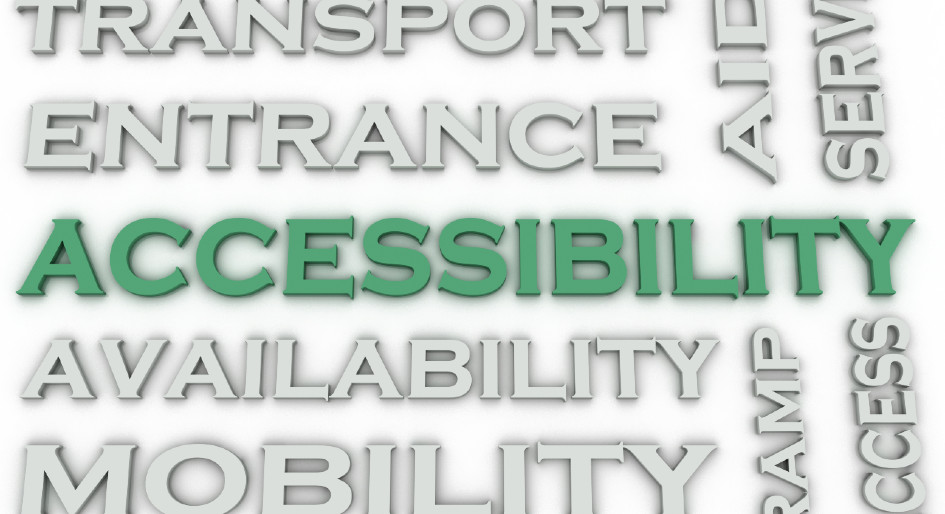Society benefits, and invariably prospers, when people everywhere can more easily share their experience, knowledge and culture and exercise their spending powers. In conjunction with the International Day of Persons with Disabilities, December 3, this guest column by Brad McCannell, vice president of access and inclusion with the Rick Hansen Foundation, reiterates that universal access spells universal opportunity – REMI Network.
An Angus Reid survey revealed that disability touches almost 50 per cent of the Canadian population through their experience of having a permanent or temporary physical disability or living with someone who has. And that number continues to increase steadily year after year.
By not prioritizing accessibility, commercial and retail operators are creating a barrier between them and half of their customers. It’s crucial to recognize that accessibility isn’t just about the one in five Canadians with a disability. It extends to their partners, friends and family. Consider the statistics. In Canada, people with disabilities, along with their friends and families, command a whopping $538.5 billion in disposable income, according to the Conference Board of Canada.
Despite this, a significant number of people with disabilities report subpar customer experiences. Various barriers hinder participation, from simply not being able to get into buildings, to not being able to function in the space without support from items like hearing loops that support people with hearing loss use.
Investing in accessibility aligns with ethical considerations but also makes good business sense. Beyond tapping into a vast market share, it streamlines processes and enhances brand value because many appreciate businesses prioritizing inclusivity. For instance, one of Canada’s iconic landmarks — the CN Tower — has achieved a record level of accessibility, attaining the highest level of recognition from the Rick Hansen Foundation Accessibility Certification (RHFAC) program.
Peter George, chief operating officer of the CN Tower reports: “By making accessibility updates to the CN Tower, the amount of time people spend in our building has increased. People are calmer, happier and more willing to spend time in our retail store. Not only is improved access the right thing to do, but it also makes good business sense.”
Amidst the current labour shortage, businesses must look beyond traditional sources for workers. Employees with disabilities have equal or superior productivity, and an impressive retention rate of 93 per cent, according to a 2018 University of British Columbia study.
Yet, more than half a million Canadians with disabilities are kept out of the workforce by barriers in the built environment. If these barriers were removed, having people with disabilities in the workforce could add nearly $17 billion to the national gross domestic product (GDP) by 2030. So, the current practice of only meeting code minimums that limit the participation of people with disabilities, actually holds the whole country back.
Workplace accommodations aren’t demanding. Common requirements include flexible work arrangements, workstation modifications and human or technical supports. And contrary to common misconceptions, it does not have to cost a lot to make changes.
A feasibility study by the architecture firm, hcma, in collaboration with the Rick Hansen Foundation, reveals that integrating accessible features at the project planning stage adds virtually no additional costs. Retrofits, while more complex, can often achieve greater accessibility with simple, cost effective changes.
When people with disabilities have jobs, they have income and can establish solid credit ratings. That, in turn, means having access to credit cards, mortgages and all financial foundations that enable social participation. That reinforces to employers and retailers that enabling access is a normal and necessary business function. More than just a paycheck for people with disabilities, it’s an opportunity to contribute, to feel valued, to create social interaction and to be part of the solution.
The fastest way to create employment is to create accessible work environments in the retail and commercial sectors. The most straightforward way to create access in these environments is the practical application of universal design beginning with the Rick Hansen Foundation Accessibility Certification Program to create common language and common methodology to measure accessibility. The RHFAC puts everyone on the same page; it makes everything measurable across different projects, portfolios, cities, even across different countries.
In 2019, the Accessible Canada Act mandated federal buildings and businesses be accessible, and provinces such as British Columbia and Saskatchewan have followed suit, aligning their accessibility requirements to these new national standards.
But where to start? RHFAC offers an invaluable road map for organizations regardless of where they are on their accessibility journey. RHFAC not only measures and rates sites for meaningful accessibility but provides data to help prioritize improvements over the short and long term. For those eager to learn how to create welcoming spaces, the Foundation offers a variety of courses, ranging from the one-hour Inclusion and accessibility training to more comprehensive courses for industry professionals.
A survey from the Return on Disability Group in the Harvard Business Review revealed that only 4 per cent of employers included disability as part of their definition of diversity, equity and inclusion (DE&I) environments. Without meaningful access, there can be no diversity or equity. There can be no inclusion.
Brad McCannell is vice president of access and inclusion with the Rick Hansen Foundation.





